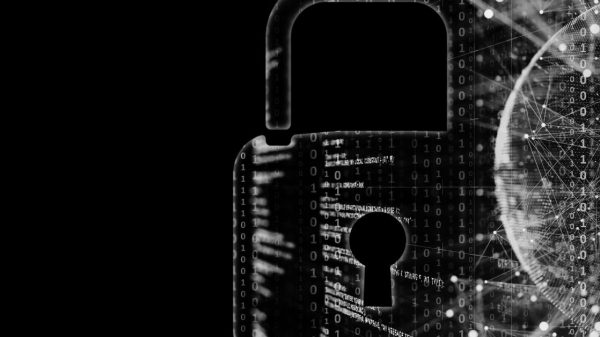In the rapidly evolving digital landscape, cloud computing has become the backbone of modern enterprises, offering unparalleled scalability, flexibility, and efficiency. However, this shift to the cloud has also introduced a complex array of security challenges. As we step into 2025, the sophistication of cyber threats continues to escalate, necessitating a proactive and comprehensive approach to top cloud network security.
This blog delves into the essential security measures that organizations must adopt to safeguard their cloud environments. We will explore the implementation of Zero Trust Architecture, the role of Cloud Security Posture Management (CSPM), the integration of DevSecOps practices, and other critical strategies. By embracing these best practices, businesses can build resilient, future-ready cloud infrastructures capable of withstanding the evolving threat landscape.
Get Our FREE Networking Security Checklist
Understanding the Top Cloud Network Security Landscape in 2025
The adoption of cloud services has surged, with Gartner predicting that by 2025, 95% of new digital workloads will be deployed on cloud-native platforms.
This widespread adoption has made cloud environments a prime target for cybercriminals. The increasing complexity of cloud infrastructures, coupled with the rise of sophisticated attack vectors, underscores the need for robust security measures tailored to the cloud.
One of the most significant challenges is the dynamic nature of cloud environments. Traditional security models, which rely on perimeter-based defenses, are inadequate in a landscape where data and applications are distributed across multiple platforms and accessed from various locations. This shift necessitates a move towards more adaptive and comprehensive security frameworks.
Essential Security Measures

To effectively secure cloud networks in 2025, organizations should focus on the following key areas:
1. Zero Trust Architecture Implementation
The Zero Trust model operates on the principle of “never trust, always verify,” ensuring that every access request is thoroughly authenticated, authorized, and encrypted, regardless of its origin.
Key Components:
- Microsegmentation of Networks: Dividing the network into isolated segments to limit lateral movement by attackers. This approach ensures that even if one segment is compromised, the breach does not extend to other parts of the network.
- Continuous Validation of Security Posture: Regularly assessing and validating security measures to ensure compliance with policies and the effectiveness of defenses. This includes real-time monitoring and automated compliance checks to detect and remediate vulnerabilities promptly.
- Context-Based Access Controls: Implementing access controls that consider user identity, location, device health, and other contextual factors to make informed access decisions. This ensures that access is granted based on a comprehensive assessment of risk factors.
Real-World Example:
A leading financial institution implemented Zero Trust Architecture to protect its sensitive customer data. By enforcing strict access controls and continuously monitoring user activities, the bank reduced unauthorized access incidents by 40% within a year.
Challenges and Solutions:
- Integration Complexity: Implementing Zero Trust requires integrating various security tools and technologies, which can be complex. To address this, organizations should adopt a phased implementation strategy, starting with critical assets and gradually extending Zero Trust principles across the entire network.
- User Experience Impact: Strict access controls may affect user experience. Balancing security and usability is crucial, which can be achieved by implementing adaptive authentication methods that adjust security requirements based on the assessed risk level.
2. Cloud Security Posture Management (CSPM)
CSPM solutions provide automated tools to assess and manage the security posture of cloud environments, ensuring compliance and identifying risks.
Key Features:
- Automated Security Assessments: Continuous scanning of cloud resources to detect misconfigurations and vulnerabilities. This proactive approach helps in identifying potential security gaps before they can be exploited.
- Compliance Monitoring: Ensuring that cloud configurations adhere to industry standards and regulatory requirements. CSPM tools provide real-time compliance reporting, facilitating easier audits and regulatory adherence.
- Risk Visualization: Providing visual representations of security risks to prioritize remediation efforts effectively. This helps security teams to focus on the most critical issues that pose the highest risk to the organization.
- Remediation Recommendations: Offering actionable insights to address identified security issues promptly. Some CSPM tools also provide automated remediation capabilities to fix issues without manual intervention.
Industry Statistics:
According to a report by Orca Security, organizations that implemented CSPM solutions experienced a 30% reduction in cloud security incidents within the first year.
Emerging Trends:
- Integration with DevSecOps: Modern CSPM tools are integrating with DevSecOps pipelines to provide real-time security assessments during the development process, ensuring that security is embedded from the outset.
- AI-Driven Insights: Leveraging artificial intelligence to analyze vast amounts of data and provide predictive insights into potential security risks, enabling proactive defense strategies.
3. DevSecOps Integration
Integrating security into the DevOps process ensures that security measures are considered throughout the software development lifecycle, leading to more secure applications and infrastructure.
Key Practices:
- Security Automation in CI/CD Pipelines: Incorporating automated security checks into Continuous Integration and Continuous Deployment pipelines to detect and address vulnerabilities early in the development process. This includes automated code analysis, dependency scanning, and configuration checks.
- Infrastructure as Code (IaC) Security Scanning: Analyzing IaC templates for security issues before deployment to prevent misconfigurations. By treating infrastructure configurations as code, organizations can apply the same security and quality checks as they do for application code.
Get Our FREE Networking Security Checklist
Conclusion
In the dynamic landscape of 2025, cloud network security is paramount for organizations striving to protect their digital assets and maintain operational integrity. Implementing a Zero Trust Architecture ensures that every access request is meticulously authenticated, minimizing the risk of unauthorized intrusions. Adopting Cloud Security Posture Management (CSPM) facilitates continuous monitoring and compliance, enabling organizations to proactively identify and remediate vulnerabilities. Integrating DevSecOps practices embeds security into the development lifecycle, fostering a culture where security is a shared responsibility across all teams.
However, the journey doesn’t end with implementation. Regular audits, employee training, and staying abreast of emerging threats are crucial to maintaining a robust security posture. By embracing these best practices, organizations can navigate the complexities of cloud security, ensuring resilience against evolving cyber threats and positioning themselves for sustained success in the digital era.










